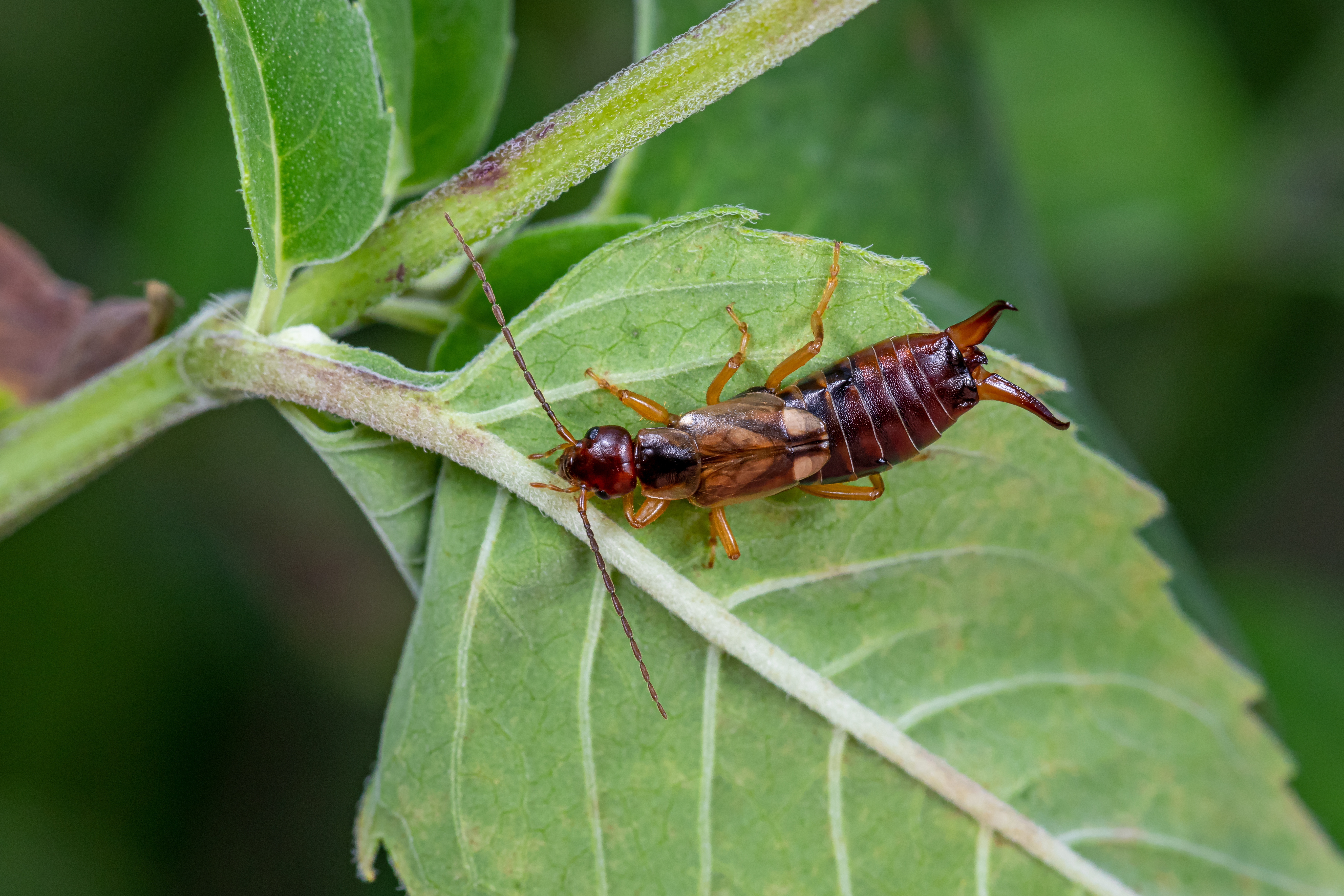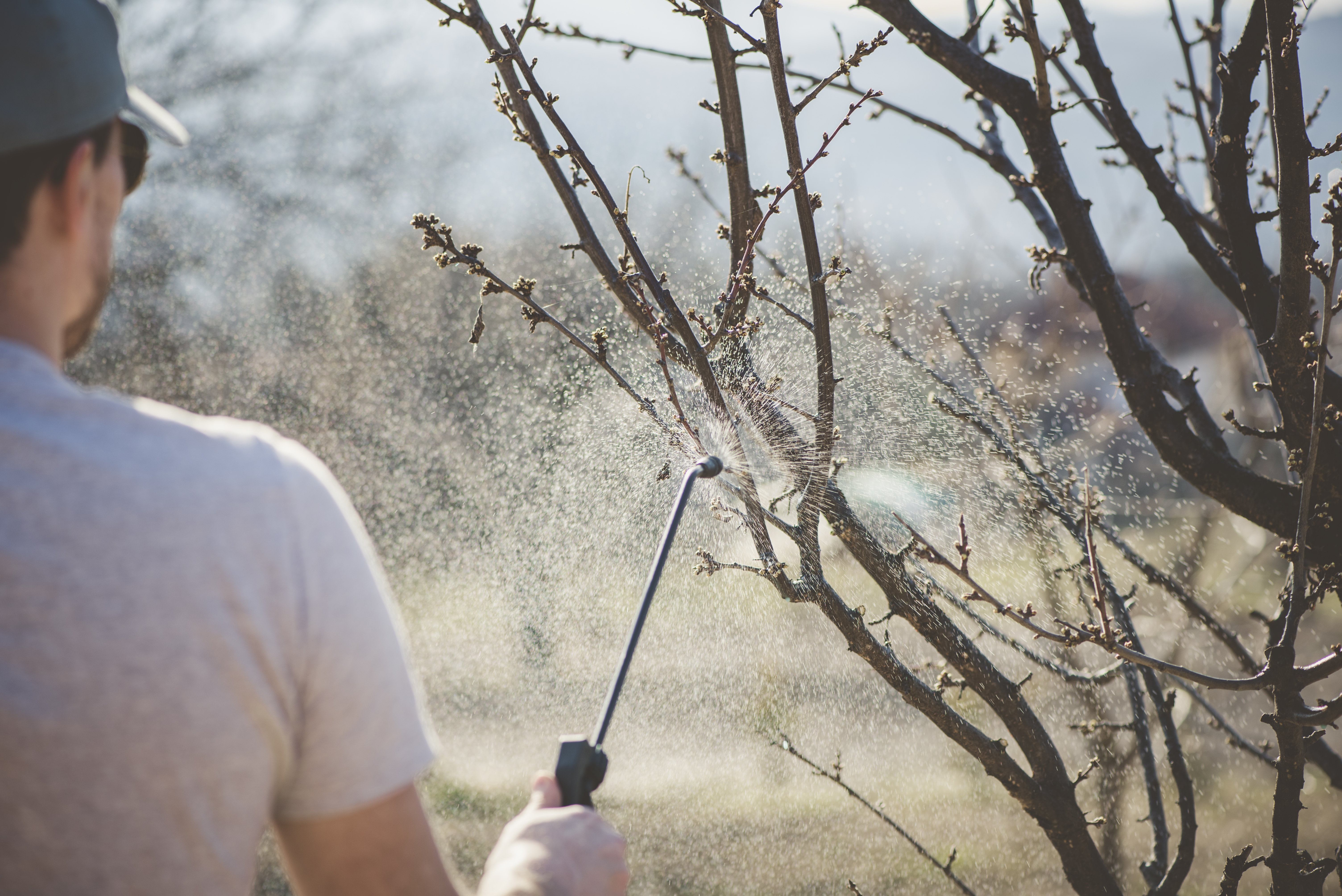
Whether you have bugs, bats, or rodents invading your home, you’ll want to contact an exterminator quickly. Find out how much pest control costs in Columbus, OH.
They’re not as scary as legend suggests—unless you’re a lettuce leaf


Earwigs are small insects that feed on outdoor plants and crops.
They feed at night and prefer cold, remote spaces during the day.
Signs of earwigs include damaged plants, foul odor, and moisture issues.
Removing piles of debris can keep earwigs at bay.
Your local exterminator can help treat and prevent an earwig infestation.
With pincers on their backsides and a name that sounds like a nightmare, earwigs can get a bad rap. But don’t worry—earwigs are less likely to crawl into your ears and more likely to snack on your salad trimmings. So what exactly are earwigs, and should you be concerned if you find one scuttling across your floor? Let’s take a closer look.
Earwigs are small insects with long, narrow bodies and pincers located on the back of their abdomen. These pesky, though mostly harmless bugs try to come inside your home, but most earwigs prefer to pester outdoor plants.
Some species can fly, but only in short bursts, while others are landbound. Thankfully, these tiny creatures don’t spread disease, but they can release a foul smell and use their pincers if they feel threatened, which usually happens when they’re picked up or agitated.
To better understand these nocturnal creatures, it's helpful to examine their key traits—ranging from their physical characteristics and feeding habits to their habitat preferences. Here are the defining features that set earwigs apart from other insects.
You may have to squint to see earwigs, since they range in size from ¼ to 1-inch long. Their exterior has a reddish brown to black coloring with two pairs of wings at the front and hind sides of their bodies. They have 6 legs, 2 antennae, and a pair of pincers by their abdomen.
Like a growing teen who gets the midnight munchies, earwigs tend to feed at night. They feast on insects, leaves, fruits, flowers, and mold until the sun comes up and they retreat to cold, wet areas that get a lot of traction. Some earwig infestations target seedlings and garden crops, which can wreak havoc on your growing plants.
These insects prefer to live in large groups under piles of lawn debris, underneath mulch, or covered by wet leaves. The only time they will infiltrate a home is if they have easy access due to unsealed cracks or openings. Once they make their way in, expect to find them near water sources in kitchens, bathrooms, and laundry rooms.

While the biggest sign of an earwig infestation is a physical sighting, other indicators are more subtle since they’re likely located outdoors. Here are a few signs to look out for.
Ragged holes in your leaves, flowers, or fruit are a clear sign that these lawn pests are up in your space—and feasting on your plants, too. You may have to head outside at night with a flashlight to catch them in action.
A musty, unpleasant scent can be the doings of a disturbed earwig who feels threatened or on edge. This is especially true if they’re picked up or messed with while they’re burrowing underneath piles of moistened leaves, mulch, or firewood.
Although earwigs don’t necessarily cause moisture issues, they can follow if you have leaky pipes or undetected buildup under your sink or in other areas of your home. Check regularly for plumbing issues to ensure earwigs don’t make themselves at home.
The best way to banish earwigs from your property is to regularly remove piles of leaves, mulch, or other vegetation from the outside, especially if these piles are located near windows, doors, or your foundation. Firewood piles and logs are also appealing to earwigs, so you should keep them stored in a dry place or remove them entirely if they’re infested.
If you’re having persistent earwig issues, your local exterminator can inspect your property and come up with a treatment plan to get rid of them and keep them from coming back.
From average costs to expert advice, get all the answers you need to get your job done.

Whether you have bugs, bats, or rodents invading your home, you’ll want to contact an exterminator quickly. Find out how much pest control costs in Columbus, OH.

How much does bee removal cost? Learn what you’ll pay based on factors like hive location, size of the infestation, extermination or removal, and more.

Find out how much it costs to remove armadillos and stop them from coming back. Know how much to budget to humanely remove these pesky critters from your yard.

Rodents can wreak havoc on your house if they build a nest under the porch. Learn how to get rid of rodents under the house and keep them from coming back.

Learn the most common signs of carpenter ants and where to look for them in the house. We cover costs to remove them and prevention methods in our detailed guide.

If your dog brought some unwelcome pests into bed with you, learn how to get rid of fleas in bed before you’re covered in itchy bites.